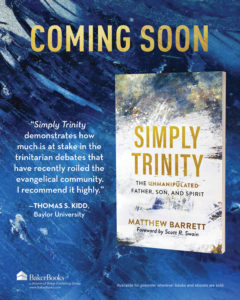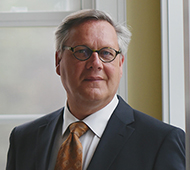
The Heidelberg Catechism: A Reformation Legacy of Comfort
The  first decades of the twenty-first century have seen a renaissance of catechetical instruction—a teaching of the basic tenets of Christianity that include expositions of the Decalogue, Symbolum Apostolorum, the Lord’s Prayer, and the Sacraments. Although many have been deprived of structured teaching concerning foundational biblical truths as they relate to the progression of the Christian life (1 Cor. 14:19; Gal. 6:6), a renewed interest in catechism is seen by recent publications such as the New City Catechism (Presbyterian, Reformed), To Be a Christian: An Anglican Catechism (Confessional Anglican), reprints of Keach’s Catechism (1695, Baptist) and Spurgeon’s Catechism (1855), as well as the centuries sustained use of the Heidelberg Catechism (1563, Reformed).
first decades of the twenty-first century have seen a renaissance of catechetical instruction—a teaching of the basic tenets of Christianity that include expositions of the Decalogue, Symbolum Apostolorum, the Lord’s Prayer, and the Sacraments. Although many have been deprived of structured teaching concerning foundational biblical truths as they relate to the progression of the Christian life (1 Cor. 14:19; Gal. 6:6), a renewed interest in catechism is seen by recent publications such as the New City Catechism (Presbyterian, Reformed), To Be a Christian: An Anglican Catechism (Confessional Anglican), reprints of Keach’s Catechism (1695, Baptist) and Spurgeon’s Catechism (1855), as well as the centuries sustained use of the Heidelberg Catechism (1563, Reformed).
The Merits of the Heidelberg Catechism
On the Heidelberg Catechism, Heinrich Bullinger (1504-1575) commented, “The composition of this book is clear, and its contents is pure truth. All is understandable, pious, fruitful; in concise brevity, it contains a fulness of the most important doctrines. I consider it to be the best catechism published….” Likewise, Wilhelmus à Brakel (1635-1711) wrote, “I can’t see how a minister can live and die with a good conscience if he doesn’t make work of catechetical instruction.” The Heidelberg Catechism, then, is a profound legacy of the Protestant Reformation.
The Heidelberg Catechism, it is claimed, “has circulated more widely than any other book except the Bible, Thomas à Kempis’s The Imitation of Christ, and John Bunyan’s Pilgrim’s Progress.” This catechism is full of gospel, as it is a personal, devotional, theologically careful, and biblically faithful exposition of God’s grace. In short, the Heidelberg Catechism’s theology is time and tradition tested, providing sufficient reason why this catechism should be taught and is still taught in Australia, Brazil, Canada, Germany, Hungary, Netherlands, South Africa, and the United States by those who understand themselves rooted in the Protestant Reformation of the 16th century.
Possible Objections
Others have raised objections to the use of the Heidelberg Catechism noting that it is of human origin— “the Bible is sufficient,” they say. This raises questions: Are we not elevating catechism above the Bible? What about freedom of teaching? Why one form of ecclesiastical education? – a question, particularly raised by the Arminians of the 17th century. Furthermore, this catechism is perceived as not being up-to-date and should be modified or replaced by other means of instruction (for example, a Twittechismus in 129 tweets). Finally, new insights in pedagogy have led to an increased skepticism towards a form of instruction based on knowledge acquired by rote, an attitude directed also against catechetical instruction – Isn’t this teaching tool too heavy on cognition? And, last but not least, the question remains as to whether a text written during the 16th century Reformation, a different context of culture and time, conveys Christian faith in a way that is recognizable as biblically founded and relevant to the present time. In summary, then, our culture, context, and contemporary need for conveying the Christian faith provide ample reasons why this aged catechism should not be taught. The Heidelberg Catechism, then, is one of the most personal and most devotional of the Reformation era creeds and confessions. Click To Tweet
The historical context and content of the Heidelberg Catechism (1560s), however, addresses these objections and provides directions for readers: It was written in a time where ministers were not well-trained, congregations were not well-fed with the Word, public schools and education were in disarray, where there was political instability, where there was unsystematic teaching of doctrine, doctrinal controversy, and doctrinal confusion. In a time where traditions were more prominent than the knowledge of Scripture and holy living, where too many people grew up without the fear of God and the knowledge of His Word, where many people didn’t know Christian doctrine but claimed to be Christians, the Heidelberg Catechism was written with a three-fold aim. The first goal is to have a single catechetical teaching tool replacing the various other means of instruction of Christian doctrine, thereby, solidifying the teaching of the church; second, to have a preaching guide for pastors and preachers preaching doctrine and practice; and third, to have a form of confessional unity for the church.
The Hermeneutical Key of the Catechism
Zacharias Ursinus, one of the authors of the catechism, delivered a lecture at the University of Heidelberg on the structure and content of the catechism noting, “The catechism of which we shall speak in these lectures consists of three parts. The first treats of the misery of man, the second of his deliverance from this misery, and the third of gratitude….” This three-fold division became a hallmark of the Heidelberg Catechism—misery, deliverance, gratitude; popularized at times as, guilt, grace, and gratitude; or sin, salvation, and service/Song.
The catechism, remarkably, then and now does not begin to ask: Do you believe? Are you a Christian? Do you have faith? What is the chief end of human life?, but opens with the personal question, “What is your only comfort in life and death?” This question was first and foremost for the authors. Why? Ursinus commented, “The design of the doctrine of the catechism is our comfort and salvation.” Moreover, he emphasized, the question “not only embodies the purpose, but also the substance of the catechism.”
The entire scope and content of the catechism is summed up in the word “consolation,” or comfort. Click To Tweet And so Ursinus states, “Questio de consolation ideo primo loco est posita, quia continet scopum et summan totius catechismi,” that is the entire scope and content of the catechism is summed up in the word “consolation,” or comfort. This is the hermeneutical key to read and grasp the meaning of this centuries old catechism. In a time of political struggle, doctrinal and confessional confusion, fear and anxiety, and diverse teaching and preaching methods, the catechism rises above the occasion of the historical context and its conflicts and offers a comfort consisting in the assurance of remission of sin and reconciliation with God, by and on account of Christ, by the Holy Spirit through the gospel. Ursinus concluded his lecture, “this only comfort alone is solid.”
The Only Comfort
The Heidelberg Catechism, then, is one of the most personal and most devotional of the Reformation era creeds and confessions. This catechism is more influential than many expect. Not only have Reformed churches around the world subscribed to this catechism for centuries, but believers all around the globe have found theological grounding and personal comfort in these 52 “Lord’s Days” of which the first of the 129 questions asked, “What is your only comfort in life and death?”
This is answered, then and now,
That I am not my own, but belong with body and soul, both in life and in death, to my faithful Saviour Jesus Christ. He has fully paid for all my sins with his precious blood and has set me free from all the power of the devil. He also preserves me in such a way that without the will of my heavenly Father not a hair can fall from my head; indeed, all things must work together for my salvation. Therefore, by his Holy Spirit, he also assures me of eternal life and makes me heartily willing and ready from now on to live for him.

